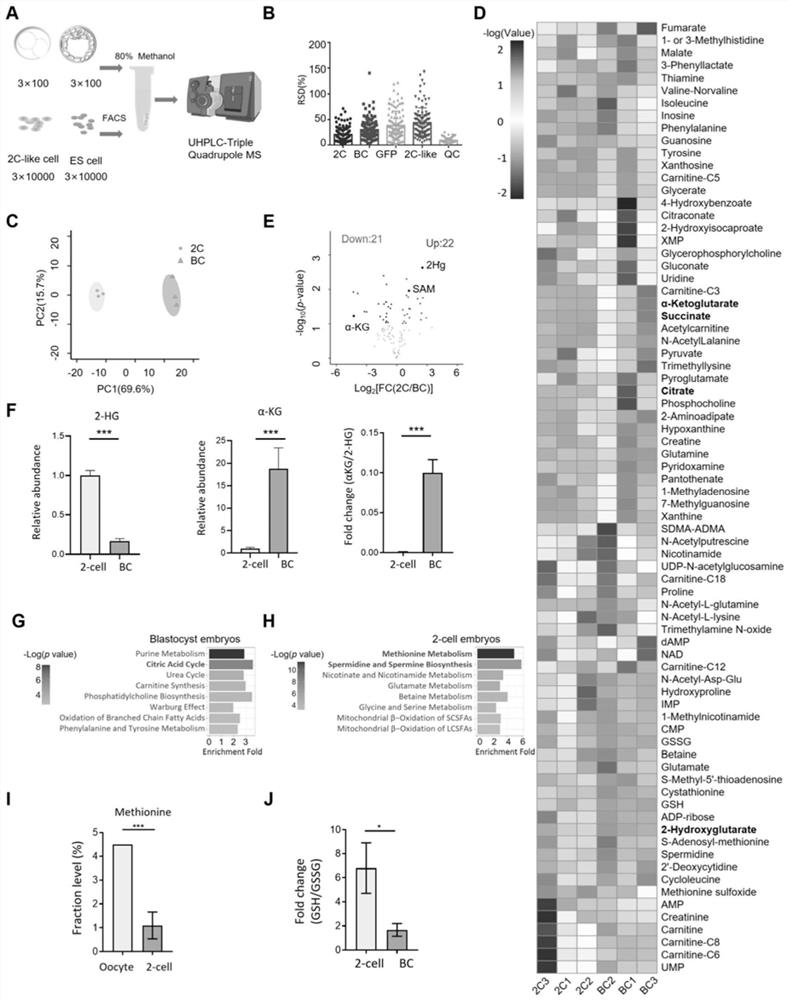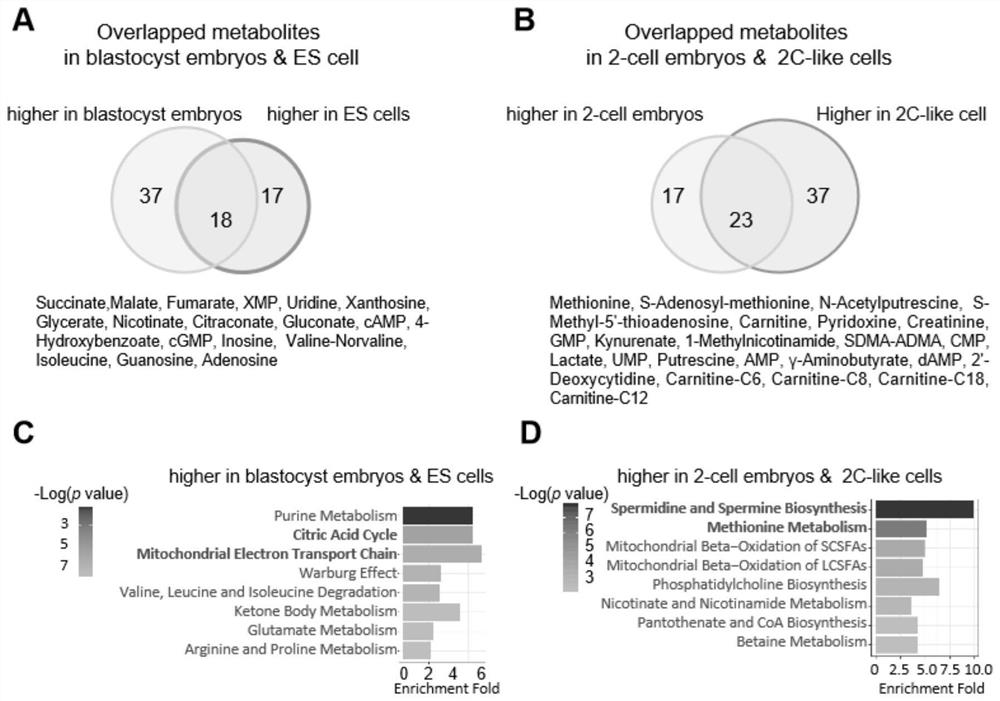Method for promoting in-vitro embryonic development by regulating metabolism
An embryo development and embryo technology, applied in the field of promoting embryo development in vitro, can solve the problems of metabolic gene expression, changes in the dynamic characteristics of epigenetic states, etc., and achieve the effect of promoting embryo development.
- Summary
- Abstract
- Description
- Claims
- Application Information
AI Technical Summary
Problems solved by technology
Method used
Image
Examples
preparation example Construction
[0060] 3. Preparation of dual reporter gene ES cell lines
[0061] E14 stably transfected reporter gene 2C::tdTomato was used to label two-cell like cells (2-cell like cells, 2CLC). Transfected Nanog::GFP labeled naive cells. After cell transfection, the 2C::tdTomato plasmid was transfected with lip2000 for 7 days and then selected with 150 μg / ml hygromycin for 48 hours. E14 cells containing dual reporter genes 2C::tdTomato and GFP were cultured in LIF / Serum medium.
[0062] 4. Sorting a small number of cells by flow cytometry
[0063] Optimizing the metabolomics of a small number of cells: ES cells (2C-like: tdTomato positive, ES: GFP positive) containing a dual reporter system were digested with trypsin for 5 minutes, the serum-containing medium was stopped, and then placed in a 37°C incubator for 30 minutes. The MEFs were allowed to attach and thus separated from the ES cells. The ES cells suspended in the supernatant were collected, washed once with 0.2% BSA / PBS, and f...
Embodiment 1
[0168] Example 1 Metabolomics analysis shows that the mitochondrial TCA cycle is significantly enhanced during the transition from 2-cell to blastocyst
[0169] To understand the dynamic metabolic remodeling during preimplantation embryo development, we employ a mass spectrometry-based few-cell metabolomics approach to directly detect the abundance of various metabolites in embryos. We collected 100 embryos at the 2-cell stage and 100 embryos at the blastocyst stage, representing the totipotent state, that is, when the zygotic genome is activated, and the pluripotent state, that is, when ES cells are generated, for targeted metabolomics analysis. Each condition contained three replicates of biological samples ( figure 1 in A). A total of 113 metabolites were detected (Table 1). Compared with the quality control, the experimental group (including 2c: embryos at 2-cell stage; BC: embryos at blastocyst stage; GFP: ES cells; 2c-like: 2-cell-like cells; QC: blank (group containin...
Embodiment 2
[0177] Interrelationship between embodiment 2α-KG and 2-HG
[0178] To understand whether metabolites are directly involved in gene regulation and embryonic development, we chose α-KG and 2-HG, which have established roles in epigenetic regulation, as research objects. 2-HG has two enantiomers, D-2-HG and L-2-HG, and it was recently found that the L-form 2-HG was found under certain physiological conditions. The very high levels of 2-HG that occur when genome-wide epigenetic reprogramming occurs in early embryos led us to investigate further the isoforms and absolute concentration. We use isotope-labeled internal standard to distinguish the type of 2-HG ( Figure 4 in A). Unexpectedly, we found that L-2-HG ( Figure 4 In B) instead of D-2-HG, there is a high concentration in MII oocytes at the zygotic stage and 2-cell embryos, and gradually decreases as the embryonic development progresses ( Figure 4 C in and Figure 4 in D). The absolute concentration of α-KG in blast...
PUM
 Login to View More
Login to View More Abstract
Description
Claims
Application Information
 Login to View More
Login to View More - R&D
- Intellectual Property
- Life Sciences
- Materials
- Tech Scout
- Unparalleled Data Quality
- Higher Quality Content
- 60% Fewer Hallucinations
Browse by: Latest US Patents, China's latest patents, Technical Efficacy Thesaurus, Application Domain, Technology Topic, Popular Technical Reports.
© 2025 PatSnap. All rights reserved.Legal|Privacy policy|Modern Slavery Act Transparency Statement|Sitemap|About US| Contact US: help@patsnap.com



